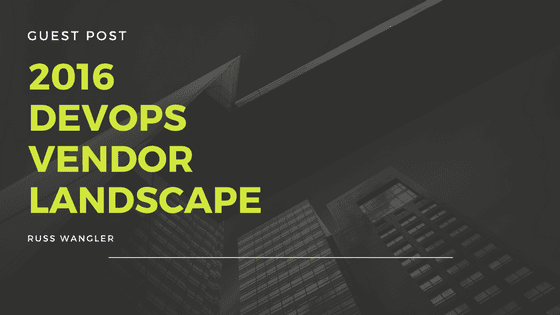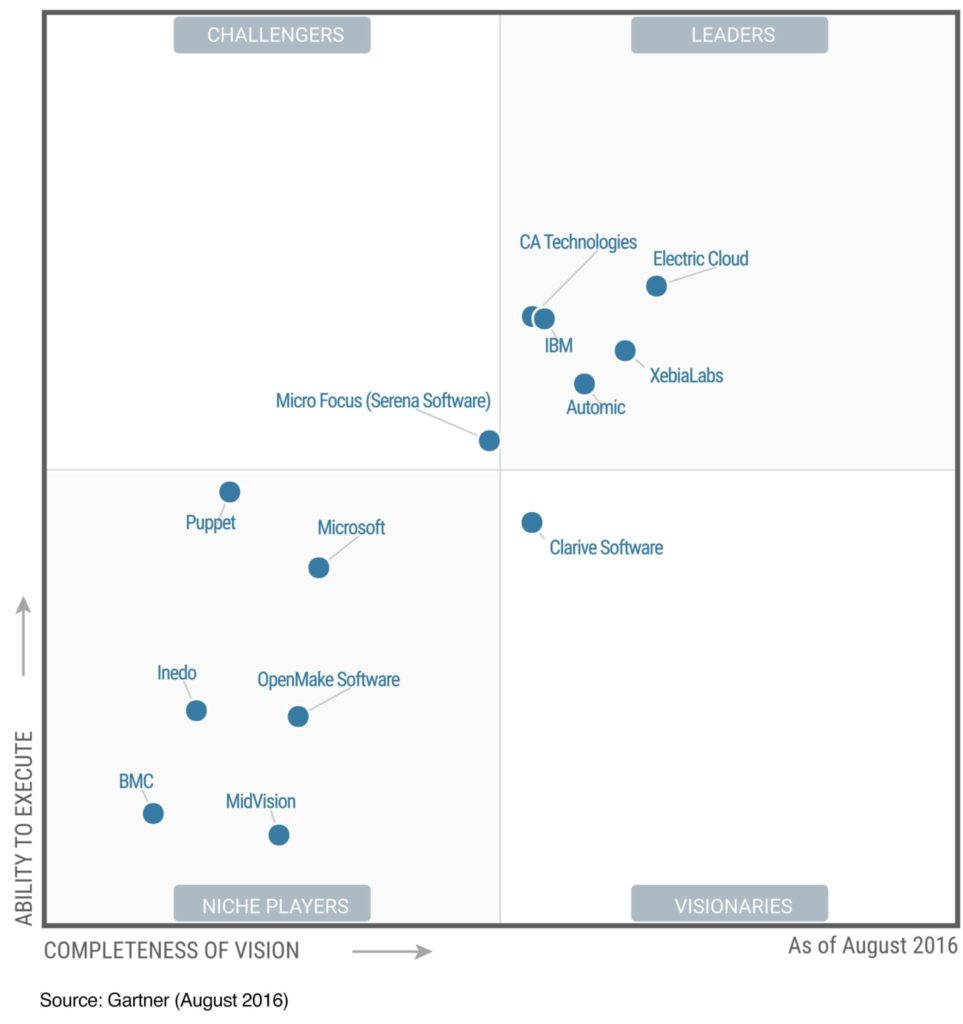I’ve been curious about the various DevOps tool vendors, beyond those my team’s have used. So here is some research that I’d like to share. We’ll start with the 2016 Gartner Magic Quadrant report and then add some to it. There’s a link to my google sheet with quick vendor comparisons and a link to the Gartner report too.
Gartner 2016 Magic Quadrant for Application Release Automation:
For the most part the leaders quadrant is dominated by the traditional players – IBM, Automic, CA Technologies each with >30 years experience. They’ve done a mix of building and acquiring capabilities. Two younger players Electric Cloud and Xebia Labs are both venture backed, private firms.
My initial preferences in the leaders quadrant are IBM and Xebia Labs. They are both pretty end to end. IBM’s stateless architectural approach and Xebia labs somewhat unique agentless architecture make them jump out for me.
The visionary quadrant’s sole member is Clarive. However, their implementation seemed convoluted. Hashicorp’s potentially a visionary though. While they are open source and thus not for everyone their architectural vision resonates with me. Their immutable infrastructure philosophy and agent and agentless capabilities stand out. I couldn’t figure out their workflow paradigm in the time I spent looking. They are too small to make the list at this point – but are worth looking at, especially if your comfortable in the open source world. Studying them may highlight relevant problems everyone’s solving which are not often discussed in the big players marketing collateral.
Serena Software is the sole player in the Challengers quadrant. While their offering is broad its also really heavy. They focus on highly regulated industries.
The stand out in the Niche quadrant for me is Puppet. Their test centric philosophy bodes well for them as they build out their offerings.
Atlassian – also not on the list – deserves special mention. If your interested in piecing together your own solution and your a development centric organization they may be a good fit. They also provide and opportunity to call out the smaller specialty players like Ansible, RunDeck, Chef etc. There’s a nice blog entry written by one of their Directors that is a good DevOps read.
Finally, a word about workflow. My experience suggests we be wary of over subscribing to the “drag and drop” philosophy. Xebia labs sums it up well in their 5 Reasons to Stay Away from Workflows technical note. Bottom line, DevOps at scale is complex. Dealing effectively with that complexity determines your level of success. Workflow can be leveraged as a tool to help visualize the broad strokes but becomes a spaghetti mess if you target “reuse” and assume “making it visible” allows people who don’t understand software development to manage the complexity of DevOps implementations at scale.
Here’s the google sheet with the high level comparisons and some comments on all of these and a few more players: DevOps Players Nov 2016.
Here’s the Gartner report too.
Enjoy!
-Russ
Hear more from Russ Wangler at his blog AgileJazz and connect with him on Twitter and Google Plus.
2016 DevOps Vendor Landscape originally appeared on AgileJazz and is shared here with permission from Russ Wangler.
Looking for a DevOps workshop or team coaching? Contact LitheSpeed.


